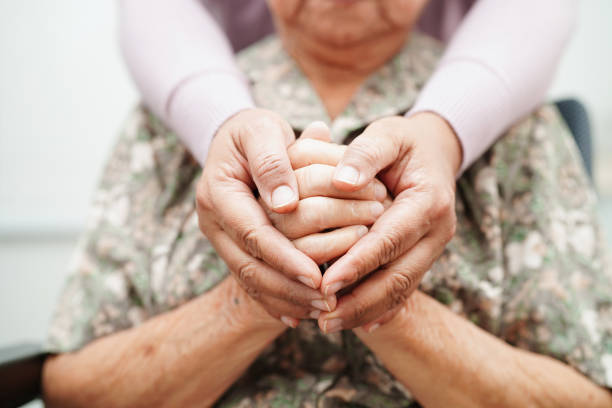Caregiving is a vital role that encompasses a broad spectrum of responsibilities and duties, often performed by individuals with unique skills and strengths. Whether it’s providing emotional support, assisting with daily activities, or offering medical care, caregivers play an essential part in the well-being of those they care for.
Understanding the different types of caregivers can help families and individuals make informed decisions about the kind of support they need. In this blog post, we will explore the four main types of caregivers, shedding light on their specific roles and how they contribute to the care and comfort of their loved ones.
Types of Caregivers
1. Family Caregivers
Family caregivers are often relatives or close friends who provide care without any formal training or compensation. They typically take on caregiving responsibilities out of love and a sense of duty, providing support such as transportation to medical appointments, meal preparation, and companionship. Due to their intimate understanding of the individual’s needs and preferences, family caregivers play a crucial role in the emotional and physical well-being of their loved ones.
2. Professional Caregivers
Professional caregivers are trained and sometimes licensed to provide a wide range of care services. This group includes home health aides, certified nursing assistants (CNAs), and personal care aides. Professional caregivers can assist with daily living activities, administer medications, and offer specialized care for specific health conditions. Their training equips them to handle medical emergencies and provide a higher level of care compared to family caregivers.
3. Independent Caregivers
Independent caregivers operate outside of agencies and are directly hired by families or individuals needing care. These caregivers often have similar qualifications to professional caregivers but offer more flexible service options and may be more affordable. Independent caregivers can perform many of the same tasks as agency caregivers, including personal care, housekeeping, and medical tasks tailored to the unique needs of their clients.
4. Respite Caregivers
Respite caregivers are temporary caregivers who provide relief for primary caregivers. They step in to take over caregiving duties for short periods, allowing primary caregivers to rest, take a vacation, or attend to personal obligations without worrying about the well-being of their loved ones. Respite caregivers can be family members, friends, volunteers, or hired professionals, and they play an essential role in preventing caregiver burnout.
The Impact of Caregiving on Caregivers

Physical Impact
Caregiving can be physically demanding, especially for caregivers who provide constant and extensive care. Tasks such as lifting and transferring individuals, assisting with mobility, and performing household chores can lead to physical strain, chronic pain, and even injury over time.
Emotional Impact
The emotional impact of caregiving should be considered. Caregivers often experience a wide range of emotions, from love and satisfaction to stress and frustration. The constant demands of caregiving, coupled with the emotional attachment to the person cared for, can lead to feelings of anxiety, sadness, and burnout. Caregivers might also feel isolated or guilty if they cannot meet all the demands placed on them.
Financial Impact
Caregiving can also have financial implications. Many family caregivers may need to reduce their working hours or leave their jobs entirely to provide care, resulting in a loss of income. Additional costs associated with caregiving, such as medical supplies, home modifications, and transportation expenses, can add to the overall stress and strain felt by caregivers.
Social Impact
Caregivers might find their social lives significantly affected by their responsibilities. The time commitment involved in caregiving can limit opportunities for social interactions, leading to feelings of loneliness and isolation. Many caregivers may find it challenging to maintain relationships and participate in social activities, further compounding the emotional and physical stress they experience.
Coping Mechanisms
To manage the impact of caregiving, caregivers must adopt effective coping mechanisms. These can include seeking support from other family members, participating in caregiver support groups, and accessing respite care services. Additionally, maintaining a healthy lifestyle through regular exercise, a balanced diet, and sufficient rest is essential for caregivers’ well-being. Prioritizing self-care and leveraging available resources can help mitigate the negative impacts of caregiving and allow caregivers to continue providing the best care possible.
Conclusion
Caregiving is a complex role that requires a combination of skills, knowledge, and compassion. Understanding the different types of caregivers can help individuals and families choose the best care options for their loved ones. It is also essential to recognize and address the potential physical, emotional, financial, and social impacts on caregivers to ensure they receive the support they need. Through effective coping mechanisms and accessing available resources, caregivers can continue providing compassionate care to their loved ones while prioritizing their own well-being.

